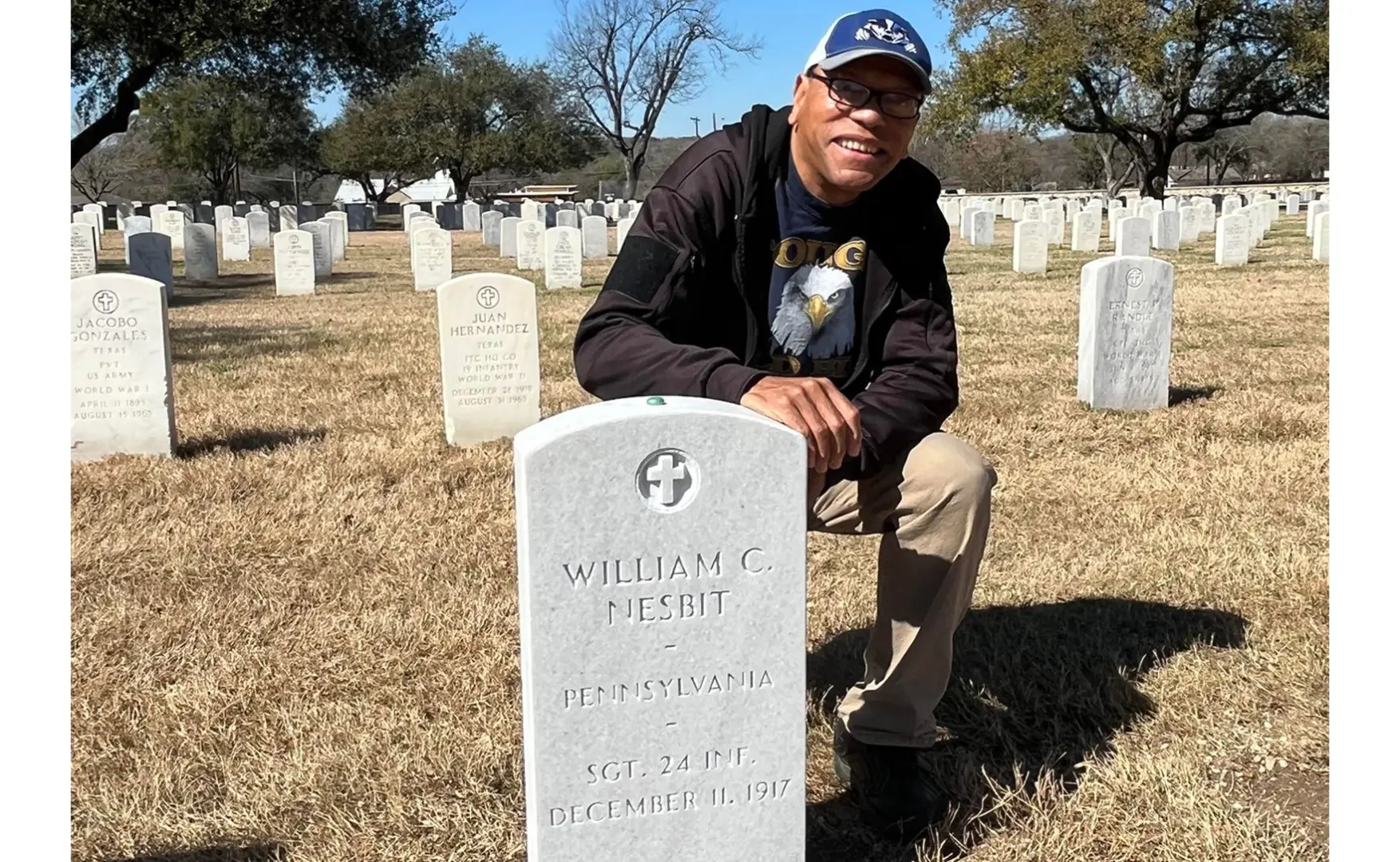
Charles Anderson, a descendent of William C. Nesbit, kneels next to his updated headstone. It recognizes his military service and Pennsylvania birthplace. His previous headstone only had his name and date of death.
Charles Anderson

Charles Anderson, a descendent of William C. Nesbit, kneels next to his updated headstone. It recognizes his military service and Pennsylvania birthplace. His previous headstone only had his name and date of death.
Charles Anderson

Charles Anderson
Charles Anderson, a descendent of William C. Nesbit, kneels next to his updated headstone. It recognizes his military service and Pennsylvania birthplace. His previous headstone only had his name and date of death.
The U.S. Army is correcting the records of 110 Black Soldiers wrongfully convicted in 1917, including one soldier from Altoona.
William C. Nesbit was a Sergeant with the 3rd Battalion, 24th Infantry Regiment. It was one of the all-Black “Buffalo Soldiers” units.
Nesbit, an Altoona native, was stationed in Texas during World War I, where he got involved in the Houston Riots of 1917. It was a response to months of racist abuse from Houston Police.
That’s according to Harriett Gaston, a community historian at Penn State Altoona.
“Word got back to the camp that one of them had been killed. This put all the rest of the men in such an uproar that they were going to fight, bring their guns, take on the Houston Police and so forth. Unfortunately, it resulted in chaos and deaths,” Gaston said.
Following that riot, Harriett said the U.S. Army convicted 110 Black soldiers of mutiny, assault and murder. All of the soldiers were represented by the same person — who was not a lawyer. And no appeals were allowed.
The Army hanged 19 soldiers, including Nesbit. It was the largest mass execution of American Soldiers by the U.S. Army, according to a U.S. Army Public Affairs release.
“The families of these men who were hung were never told about this until after the incident, after the the trial occurred and the hanging was done,” Gaston said. “So over 100 years, the families of these men have been fighting to get the record transparent, to get their ranks restored, to be recognized as part of the military.”
One of Nesbit’s descendents, Charles Anderson, joined other living relatives and the South Texas College of Law in 2020 to ask the Army to review the case. Gaston said the Army agreed to set aside the convictions in November of last year.
“The ceremony that is happening today is revealing and showing those headstones and recognizing the atrocities, the unjust trial that occurred, and stating that the U.S. Army made a mistake and wants to give back the honor that these men so deserve,” Gaston said.
The Army held that ceremony Thursday at the Fort Sam Houston National Cemetery in Texas. Charles Anderson was there to represent Nesbit’s family.
Nesbit did not have a headstone when he was first buried.
“They were buried basically in what we would consider to be unmarked graves. But in with each of the bodies, there was a soda can with the name of the person who’d been hung,” Gaston said.
A headstone added later did not mention Nesbit’s military service. The new headstone at the Fort Sam Houston National Cemetery in Texas will display his name, birthplace, military rank, and date of death: Dec. 11, 1917.

A collection of interviews, photos, and music videos, featuring local musicians who have stopped by the WITF performance studio to share a little discussion and sound. Produced by WITF’s Joe Ulrich.
The days of journalism’s one-way street of simply producing stories for the public have long been over. Now, it’s time to find better ways to interact with you and ensure we meet your high standards of what a credible media organization should be.